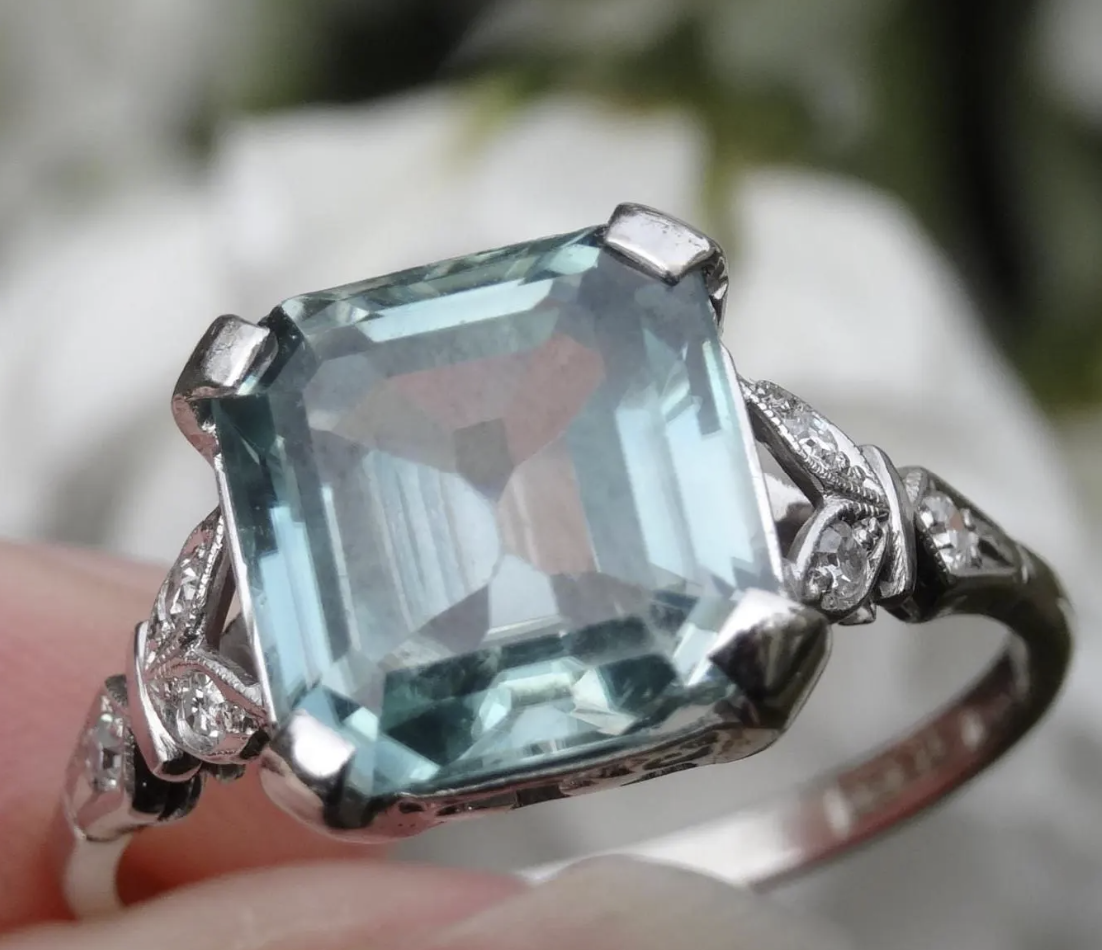Blue Zircons: The Natural Gemstone Often Mistaken for an Imitation
As a professional gemmologist and valuer based in Australia, I often encounter clients who are surprised to learn that blue zircon is a natural gemstone, not a synthetic or imitation. This confusion is understandable — and unfortunately, it's one of the key reasons this historically significant gem has fallen out of favour in recent decades. Let’s set the record straight.
Not Cubic Zirconia – A Common Misconception
Zircon and cubic zirconia may sound similar, but they are worlds apart in origin, value, and beauty.
Zircon is a naturally occurring mineral, prized for its brilliance and fire.
Cubic zirconia (CZ) is a man-made simulant, mass-produced as a diamond substitute.
The similarity in name has led to a widespread misunderstanding. Many people assume “zircon” is just shorthand for “cubic zirconia,” unaware that they’re dismissing a genuine gemstone with deep roots in gemmological history. This has unfairly tarnished zircon’s reputation in the market — particularly the most popular variety: blue zircon.
Why Blue Zircon Lost the Spotlight
Blue zircons were especially popular in the Victorian era and early 20th century. However, when cubic zirconia surged in popularity in the 1970s and 1980s as an affordable diamond alternative, the name confusion began — and blue zircon suffered as a result. Despite its brilliance, people began to overlook it, incorrectly assuming it was synthetic or “cheap.”
Today, blue zircon remains an undervalued gem, but it's one I often recommend to clients seeking a distinctive, high-refractive natural stone with vintage charm and excellent sparkle.
An image of an Art Deco blue zircon ring. This ring and others available to purchase here.
What Makes Zircons So Sparkly?
One of the standout features of zircon is its brilliance — in other words, how much it sparkles.
In simple terms, zircon has a high refractive index, which means it bends light very effectively as it enters and exits the stone. The result is a lot of internal reflection and flashes of light — similar to what you see in a diamond. Zircon also has strong dispersion, which causes it to split white light into a rainbow of colours (often called “fire”).
To put it plainly: zircons sparkle so much because they bend and bounce light in every direction, making them incredibly lively and eye-catching, especially under good lighting.
This optical performance is all natural — no treatments are needed to bring out that brilliant sparkle (though some zircons, like the blue ones, are heat-treated to enhance their colour).
The Natural Rainbow of Zircon
While blue is the most well-known colour today, zircon occurs in a wide variety of hues, including:
Golden yellow
Honey brown
Green
Colourless (once used as a natural diamond lookalike)
Pink and lilac – particularly rare and beautiful in Australian stones
Australia’s Hidden Treasures: Hart’s Range Zircons
One of the great untapped resources in the coloured gem world lies right here in Australia. The Hart’s Range in the Northern Territory produces some of the most stunning pink and lilac zircons known.
These stones are naturally coloured (not heat-treated), and are often small but incredibly vibrant. Their soft pastel tones and rarity make them perfect for collectors, bespoke jewellery designs, and anyone wanting something truly unique and Australian.
As a valuer and gemmologist, I always recommend that clients interested in unusual coloured stones consider sourcing Hart’s Range zircons while they’re still relatively unknown and underappreciated in the mainstream market.
In Summary
Blue zircon is a natural gem, often wrongly confused with synthetic cubic zirconia.
It has a long and rich history, especially in antique jewellery.
Zircons are incredibly sparkly thanks to their natural ability to bend and reflect light — similar to diamonds.
They come in many colours, with Australia producing some of the rarest and most beautiful pink and lilac stones in Hart’s Range.
These gems offer a unique opportunity for collectors and jewellery lovers to embrace a natural, ethically sourced gemstone with genuine Australian provenance.
If you’d like to know more about incorporating zircon into your next jewellery piece — or if you have vintage zircon jewellery that needs valuing — I’d be delighted to assist.
—
Lisa Millwood FGAA, Dip. DT, NCJV Registered Valuer
Expert Gemmologist & Jewellery Valuer – Australia
www.lisamillwood.com.au
